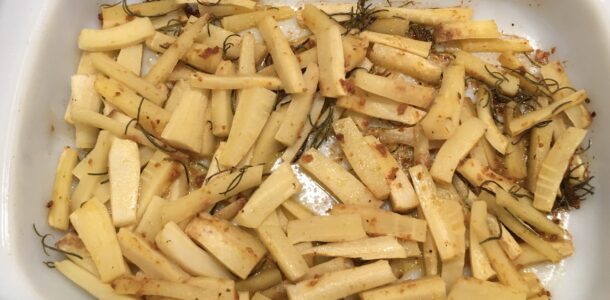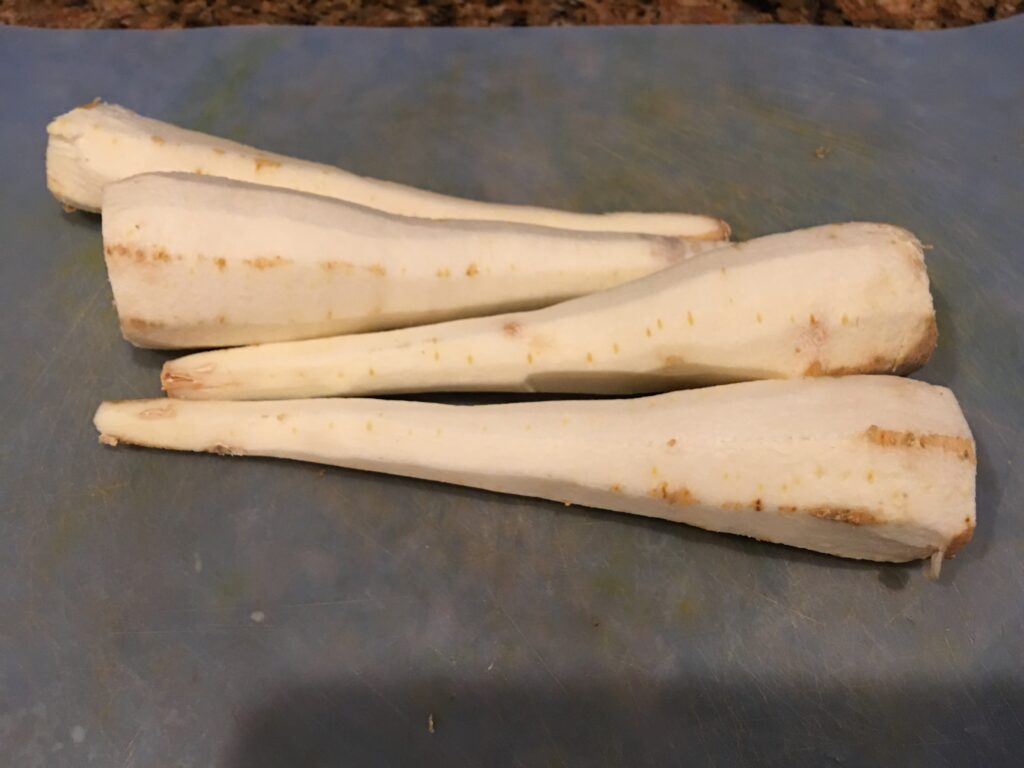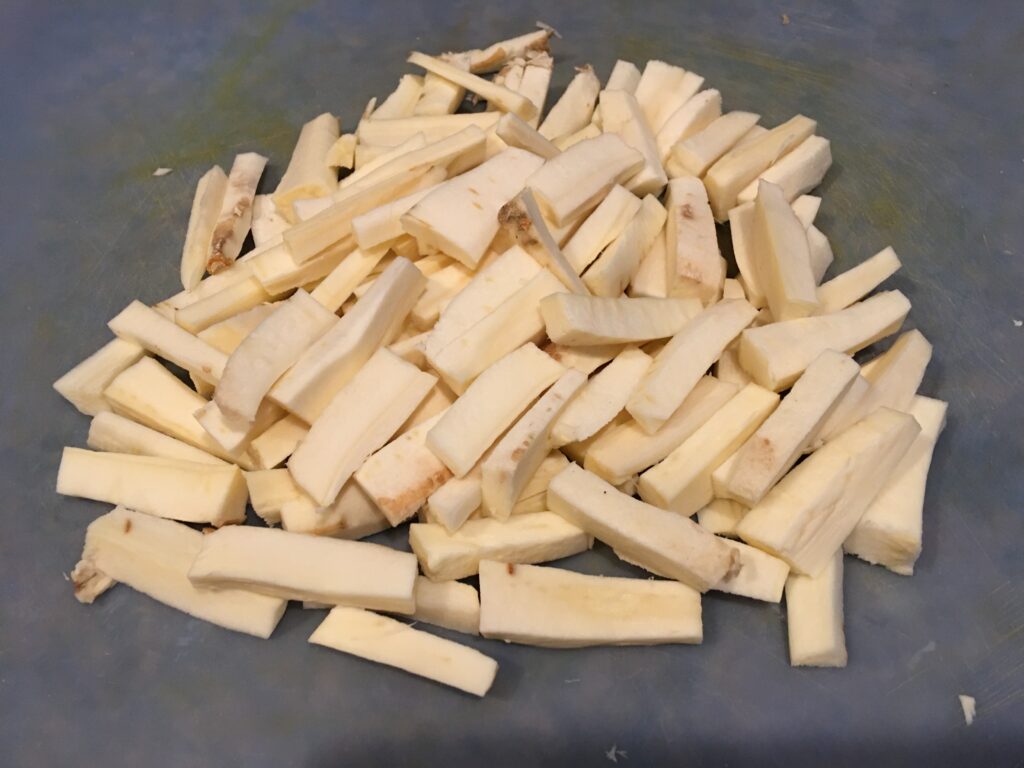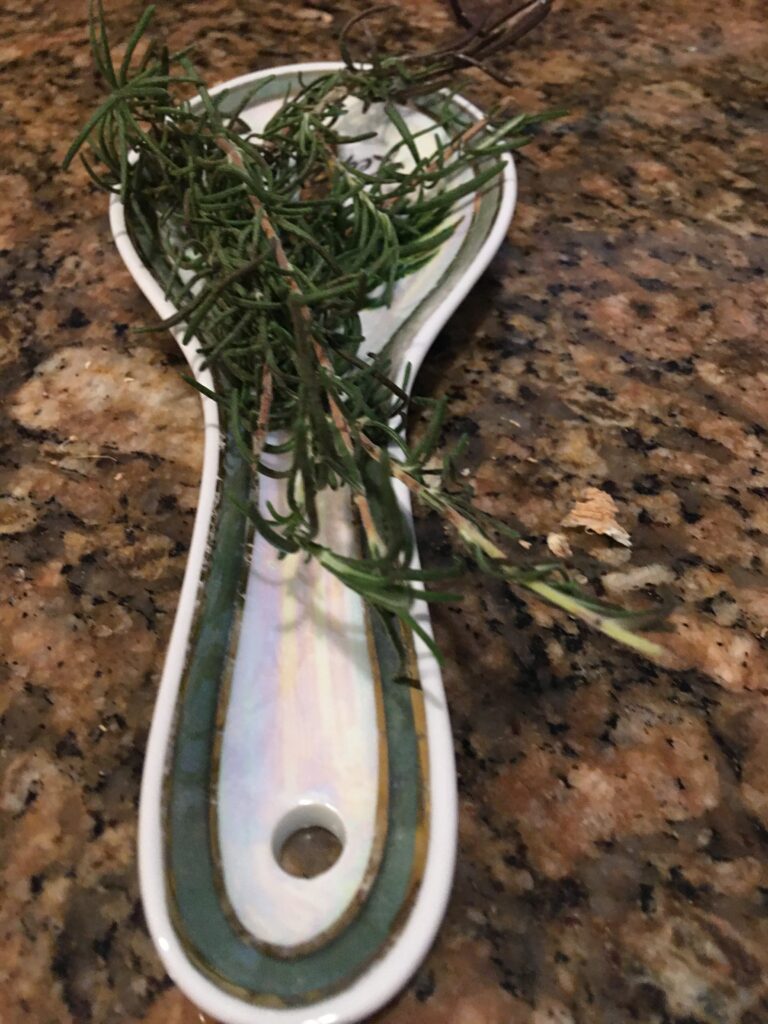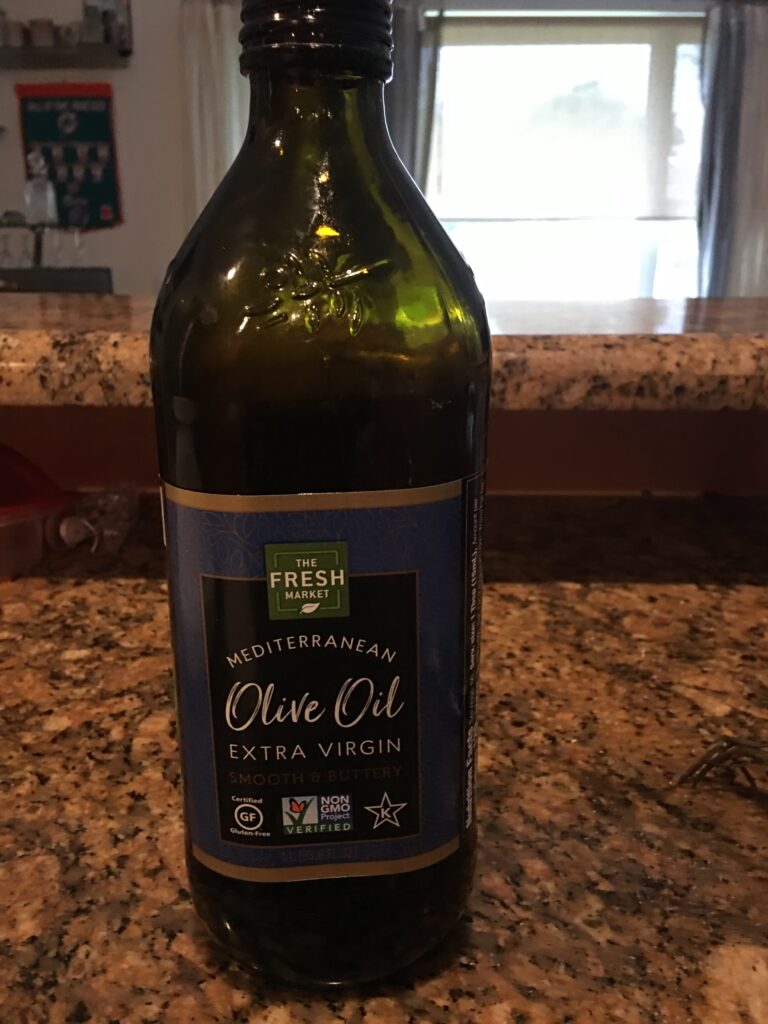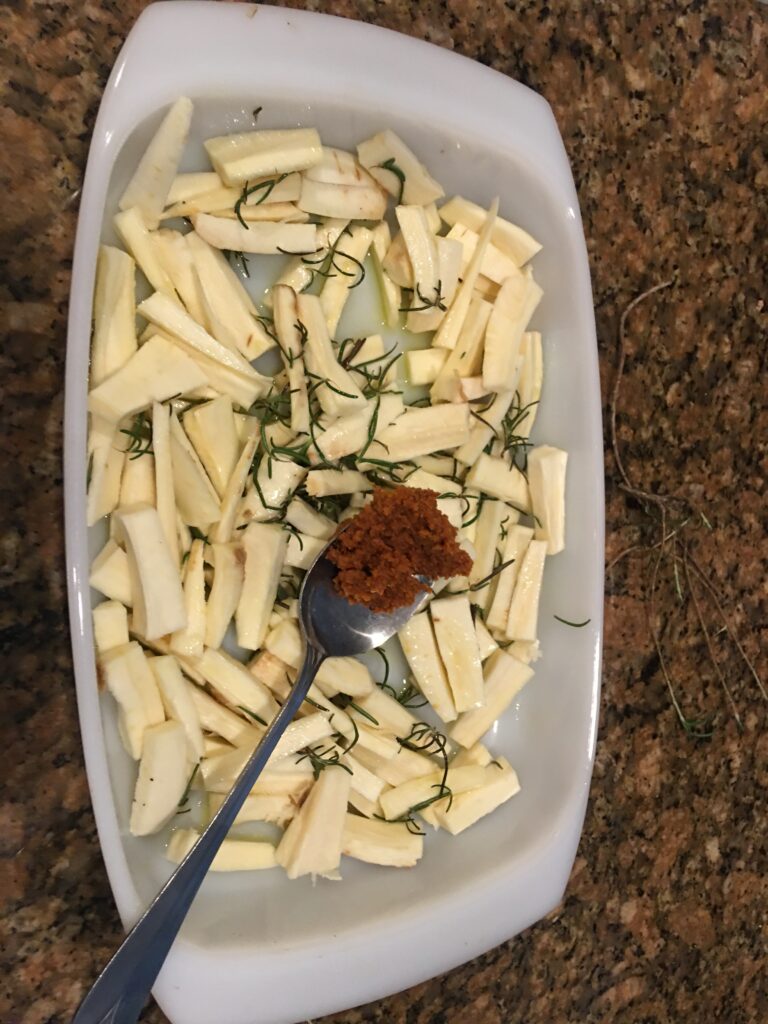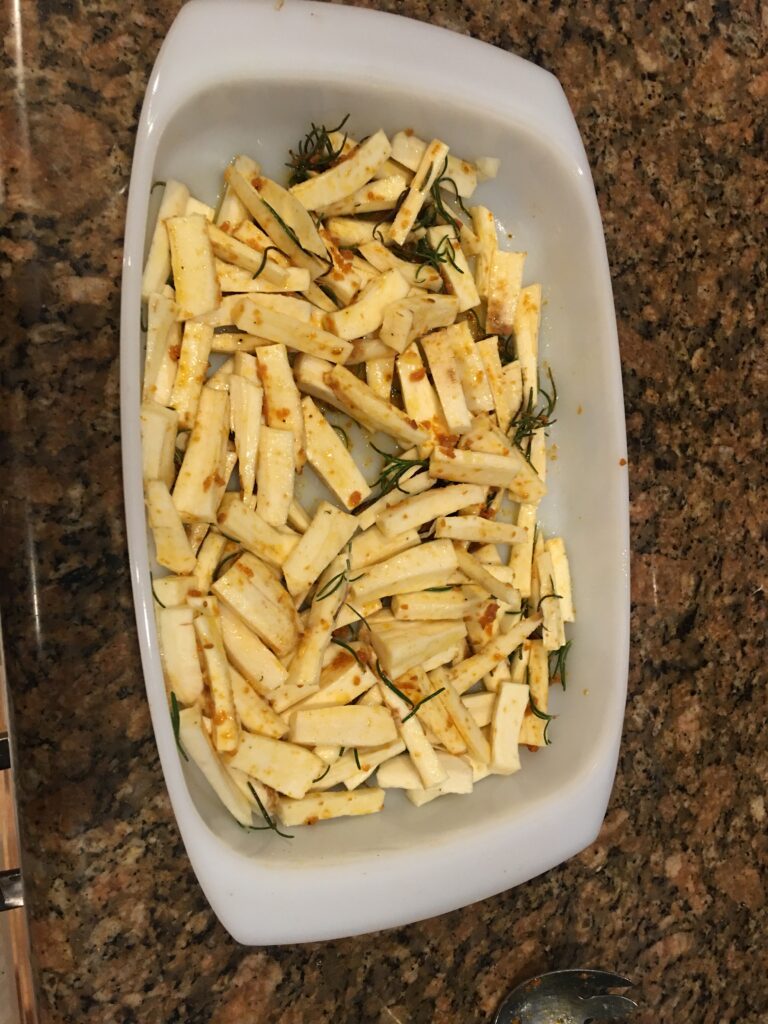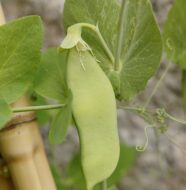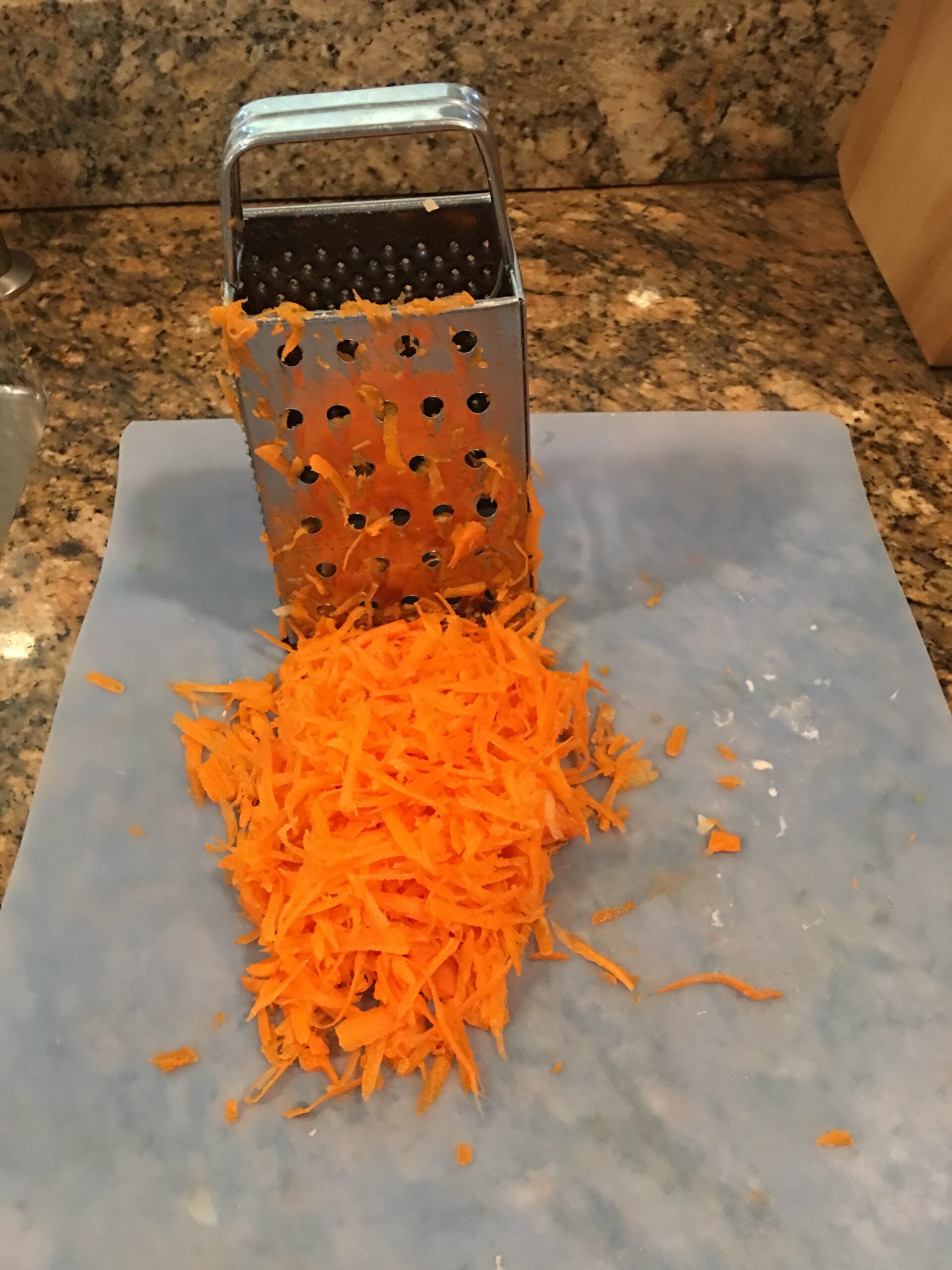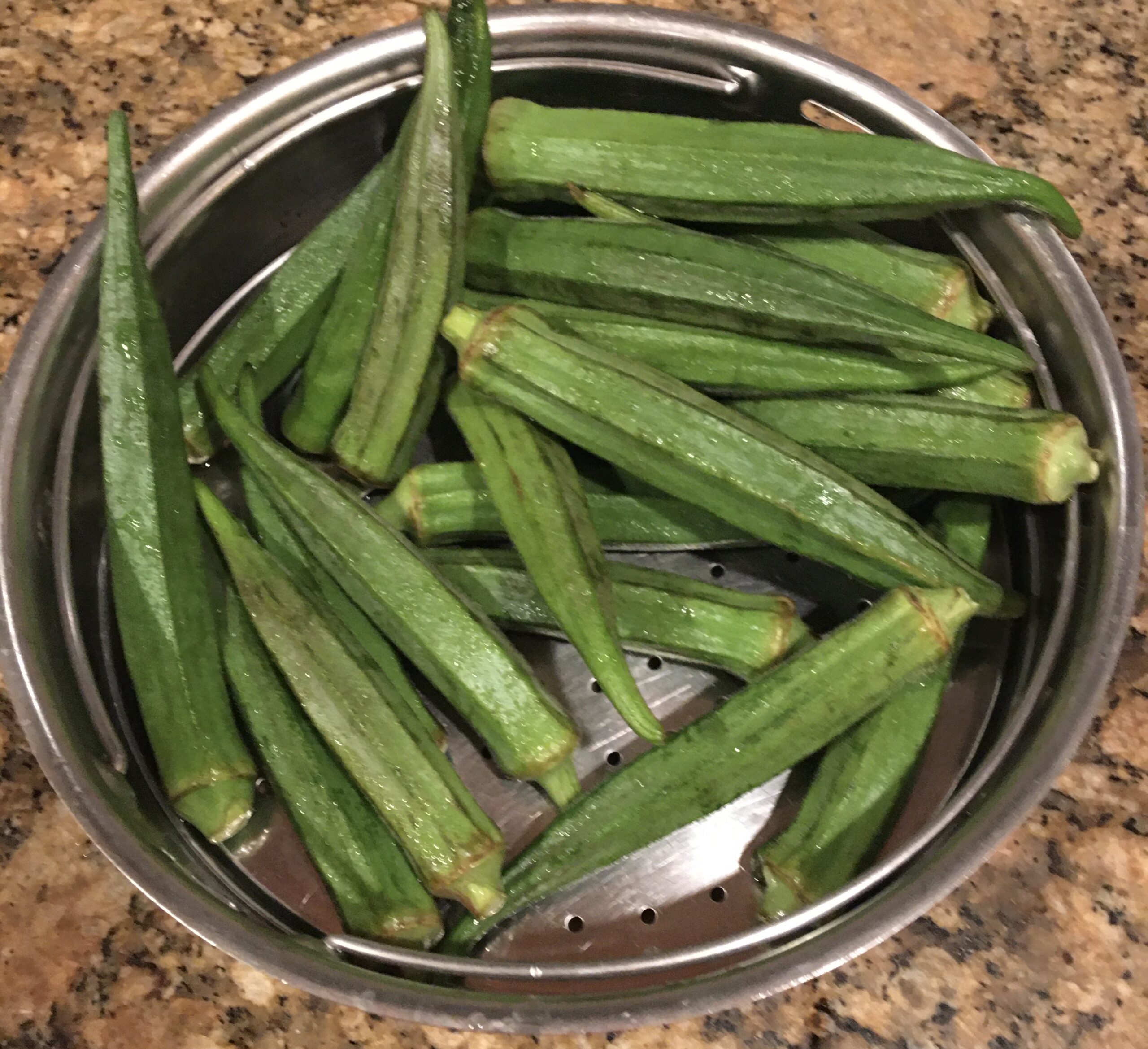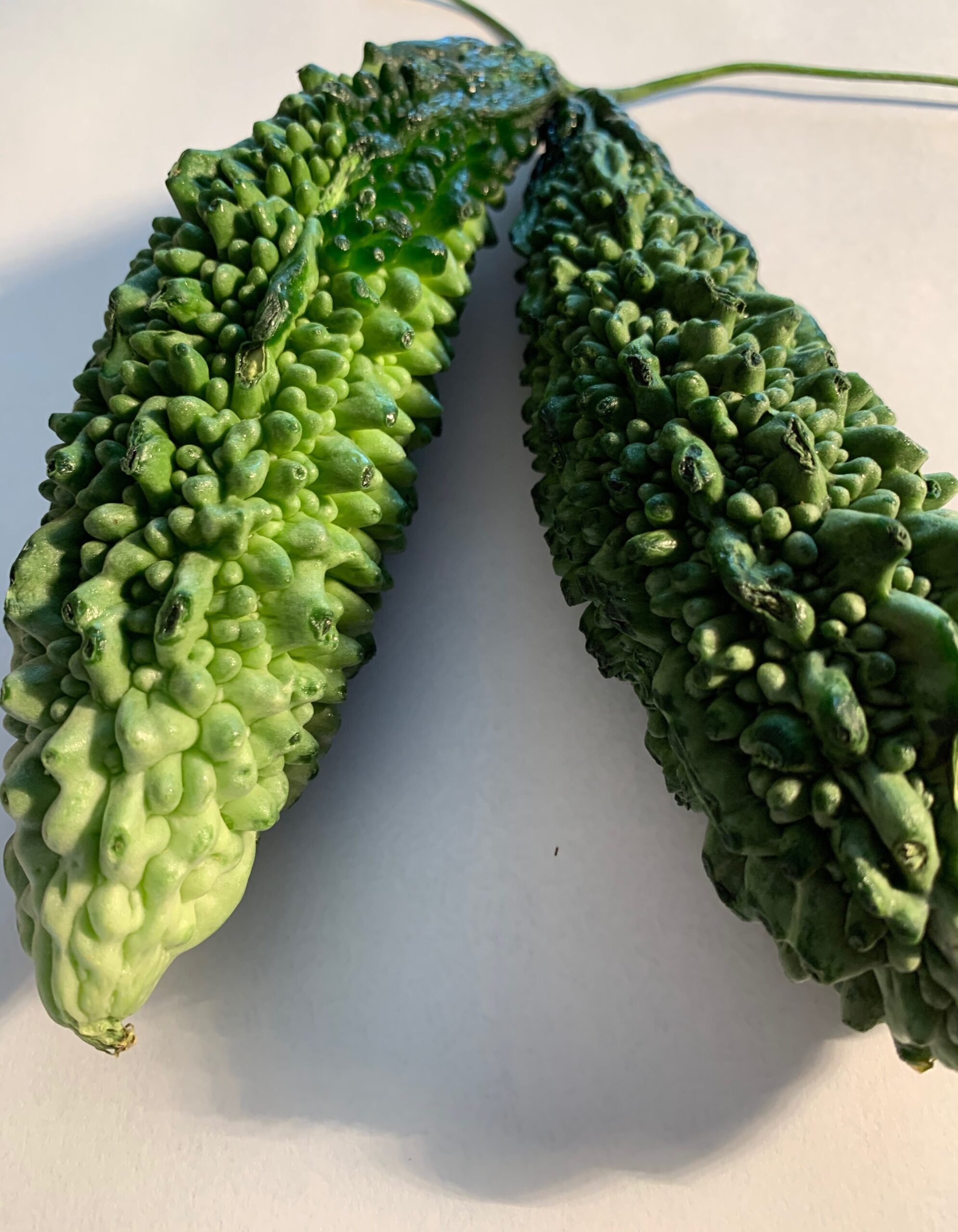Parsnip is a good carrot alternative. “Pastinaca sativa” scientific name for parsnip, is a cool biennial crop native to the Mediterranean region. It is a member of the Apiaceae family which includes Carrots, Dill, Cumin, Parsley, and Caraway. It is typically planted before the winter season because that is the time it produces its unique flavor. The plant grows up to 1.5 meters tall and is a favorite among gardeners with its short growing season.
Buying & Storage: Choose parsnips that are firm and free of spots. Look for ones with even coloring. Avoid ones with dark spots that indicate decay. Parsnips can be stored in the refrigerator for 2-3 weeks. Remove tops prior to storing. Store unwashed and loosely wrapped in a plastic bag. Cooked parsnips can be stored in the refrigerator for 2-3 days and can also be frozen.
History: Parsnips are native to Europe. They have been cultivated by Greeks and Romans. Emperor Tiberius adored them and had them brought from France every year where the colder climates allowed the roots to develop a sweeter flavor. They are a favorite of the British and have been introduced by the British Colonists in 1609 into the New World. The parsnip has strayed from gardens and become naturalized. The sugar parsnip grown in Philadelphia is the same one known abroad as “Lisbonaise”
Nutrition Facts of Parsnip
| GI=52; GL= 5 | Minerals | Vitamins |
| Energy 75kcal – 4% | Sodium 10mg – <1% | Folates 67 mcg – 17% |
| Carb 17.99 g- 14% | Potassium 975 mg – 8% | Niacin 0.7 mg – 4% |
| Protein 1.2g – 2% | Calcium 36mg – 3.5% | Pantothenic acid 0.6mg – 12% |
| Total Fat 0.3g – 1% | Copper 0.12mg – 13% | Pyridoxine 0.9mg – 7% |
| Cholesterol 0mg – 0% | Iron 0.59mg – 7.5% | Riboflavin 0.05mg – 4% |
| Dietary Fiber 4.9g – 13% | Magnesium 29mg – 7% | Thiamin 0.09mg – 7.5% |
| Manganese 0.56mg – 24% | Vitamin C 17 mg – 29% | |
| Phosphorous 71mg – 10% | Vitamin K 22.5 mcg 19% | |
| Selenium 1.8mcg – 3% | ||
| Zinc 0.59mg – 5% |
Nutrition value per 100 g. raw %DV(Source: USDA National Nutrient data base)
https://www.nutrition-and-you.com/parsnips.html
Health Benefits of Parsnip
- Boosts immune system: parsnip contains vitamin C & E which can help with free radicals removal that can potentially cause diseases. Vitamin C also produces white blood cells that can ward off microbes and help boost immunity.
- protection from colon cancer and acute lymphoblastic leukemia with polyacetylene antioxidant compounds that have anti-inflammatory, anti-fungal, and anti-cancer properties.
- Helps with weight management: The soluble fiber in parsnip can help you feel full longer and prevent the release of the hunger hormone “ghrelin”. It actually helps reduce the volume of food eaten during the day thus helping to maintain weight.
- Improves heart health: parsnip contains a generous amount of potassium which acts as a vasodilator (a compound that prevents arteries and veins from tightening.)thereby reducing blood pressure and stress on the heart. It also contains Folate that helps reduce homocysteine levels in the blood that are linked to heart disease.
- Reduce cholesterol levels and diabetes: Parsnip is a good source of soluble fiber which can reduce cholesterol levels and risk of diabetes. Fiber also improves digestive health by helping food move smoothly through the intestine thus reducing constipation.
- Reduced risk of birth defects and depression: The Folate in parsnip is known to help with reduced risk of neural tube birth defects in infants and also postpartum depression in mothers with newborns.
- https://www.nutrition-and-you.com/parsnips.html
- Garlic: offers immune support with reduced cold and flu infection.severity, fewer symptoms, and a smaller number of missed days from work or school, as per research.
- Black pepper: may stimulate the secretion of digestive enzymes that help you feel full after a meal and ease food’s transit through the digestive tract and help with the absorption of some nutrients.
- Thyme leaves: Thymol helps shrink the dermal & epidermal skin layers of dermatitis. used as a home remedy for cough, bronchitis, and other respiratory conditions.
Method to make Parsnip bake
- Preheat oven to 400F.
- Peel and cut parsnips into 1″ pieces.
- Place parsnips on a large baking sheet and drizzle with olive oil, salt, pepper, and masala paste
- Bake until parsnips are very tender 30 min.
- To make Parsnip Puree
- Cut off the top of garlic and drizzle 1 tbsp. olive oil.
- Wrap tightly in foil and place on the baking sheet with parsnips.
- Garlic should be soft & tender. Allow cooling for 5 min.
- Squeeze each pod out into a bowl.
- Place with parsnips and thyme in the food processor.
- Add milk and butter; blend until smooth to make a puree.
- Serve Parsnip Bake as an appetizer or the Puree with pasta, corn & peas.
Tips Variation: Cook parsnips in boiling water for30 minutes and use for pureeing for more moister texture

